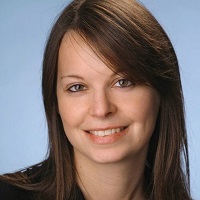 |
Ambra StefaniCenter for Sleep MedicineMedical University of Innsbruck Innsbruck, Austria |
 |
Erik St. LouisHead, Division of Sleep Neurology, Mayo Clinic Dept of Neurology; Professor of Neurology and Medicine, Mayo Clinic College of Medicine and Science Mayo Clinic Rochester, MN, USA |
Clinical neurophysiology plays an essential role in sleep physiology and sleep medicine in general, and neurologic sleep medicine in particular. Polysomnography, the basis for assessment of human sleep and most sleep disorders, includes (among others) electroencephalography (EEG), electromyography (EMG), and electrooculography (EOG) signals, which are routinely analysed for sleep staging and diagnosis of different sleep disorders.
Neurophysiology of sleep is a fascinating and rapidly evolving field, not only for what concerns the diagnosis and management of sleep disorders but also to improve knowledge about physiological sleep, its manifold roles and processes in normal brain functioning, and its changes with physiological development and aging, as well as in pathological conditions such as psychiatric disorders, epilepsy, and neurodegeneration. Automatic methods to identify changes in EEG and EMG, and artificial intelligence-based techniques, are increasingly used to improve signal analysis and usefulness of information derived from neurophysiological assessment during sleep.
This Special Interest Group is focused on the neurophysiology of sleep and sleep disorders, focusing in particular on EEG and EMG signals, separately as well as in combination, or combined with other physiological signals during sleep (e.g. heart rate, respiration).
EEG, EMG, and EOG signals comprise the cornerstone and “gold standard” of sleep assessment. EEG is essential for sleep staging, and EMG and EOG signals are needed for staging of REM sleep, as well as for detection of muscle activity during sleep like leg movements and periodic leg movements (typical of restless legs syndrome), excessive muscle activity during REM sleep (i.e. REM sleep without atonia, characterizing REM sleep behaviour disorder and essential for its diagnosis), and rhythmic movement disorders. Sleep states detected by these signals also are objective markers for key sleep processes and purposes, e.g. synaptic consolidation and central nervous system metabolite clearance.
The purposes of this SIG will be:
Ambra Stefani, MD, PHD : ambra.stefani@i-med.ac.at
Erik St. Louis, M.D.,M.S. : StLouis.Erik@mayo.edu
SIG Meetings will be held online every 2-3 months.